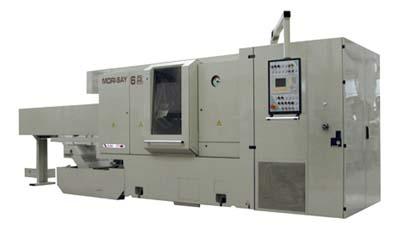
ZPS America LLC, Indianapolis, IN, announced its newest cam-driven 6-spindle automatic lathe with 67mm bar capacity. The rigid, European-built machine is designed for continuous or series production of precision-turned parts.
Solid base casting ensures maximum rigidity and stability. ZPS America is the leading source of multispindle production technology in North America, based on the wide range and types of multis the company provides to precision parts manufacturers. As of May 2009, ZPS America became the sole factory-authorized North American source for full customer support, including service, machine rebuilding, applications support, parts, training and sales for the ZPS line of cam-driven multispindle automatic lathes.
The machine includes six frontal slides with up to 110 working strokes, and six cross slides, plus four compound slides with clamping, and bar stop in the sixth station. An independent cam controls each slide. Stroke is adjustable on the rocker arm of the corresponding drive.
Contact Details
Related Glossary Terms
- computer-aided manufacturing ( CAM)
computer-aided manufacturing ( CAM)
Use of computers to control machining and manufacturing processes.
- lathe
lathe
Turning machine capable of sawing, milling, grinding, gear-cutting, drilling, reaming, boring, threading, facing, chamfering, grooving, knurling, spinning, parting, necking, taper-cutting, and cam- and eccentric-cutting, as well as step- and straight-turning. Comes in a variety of forms, ranging from manual to semiautomatic to fully automatic, with major types being engine lathes, turning and contouring lathes, turret lathes and numerical-control lathes. The engine lathe consists of a headstock and spindle, tailstock, bed, carriage (complete with apron) and cross slides. Features include gear- (speed) and feed-selector levers, toolpost, compound rest, lead screw and reversing lead screw, threading dial and rapid-traverse lever. Special lathe types include through-the-spindle, camshaft and crankshaft, brake drum and rotor, spinning and gun-barrel machines. Toolroom and bench lathes are used for precision work; the former for tool-and-die work and similar tasks, the latter for small workpieces (instruments, watches), normally without a power feed. Models are typically designated according to their “swing,” or the largest-diameter workpiece that can be rotated; bed length, or the distance between centers; and horsepower generated. See turning machine.
